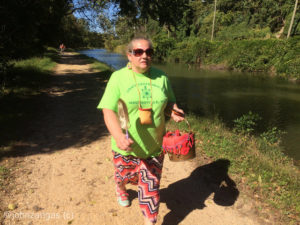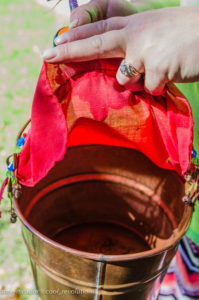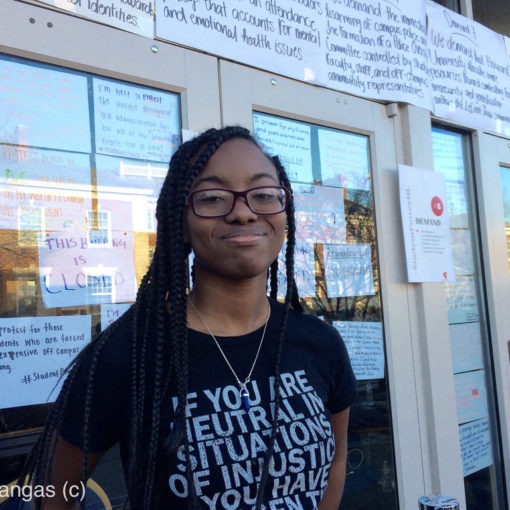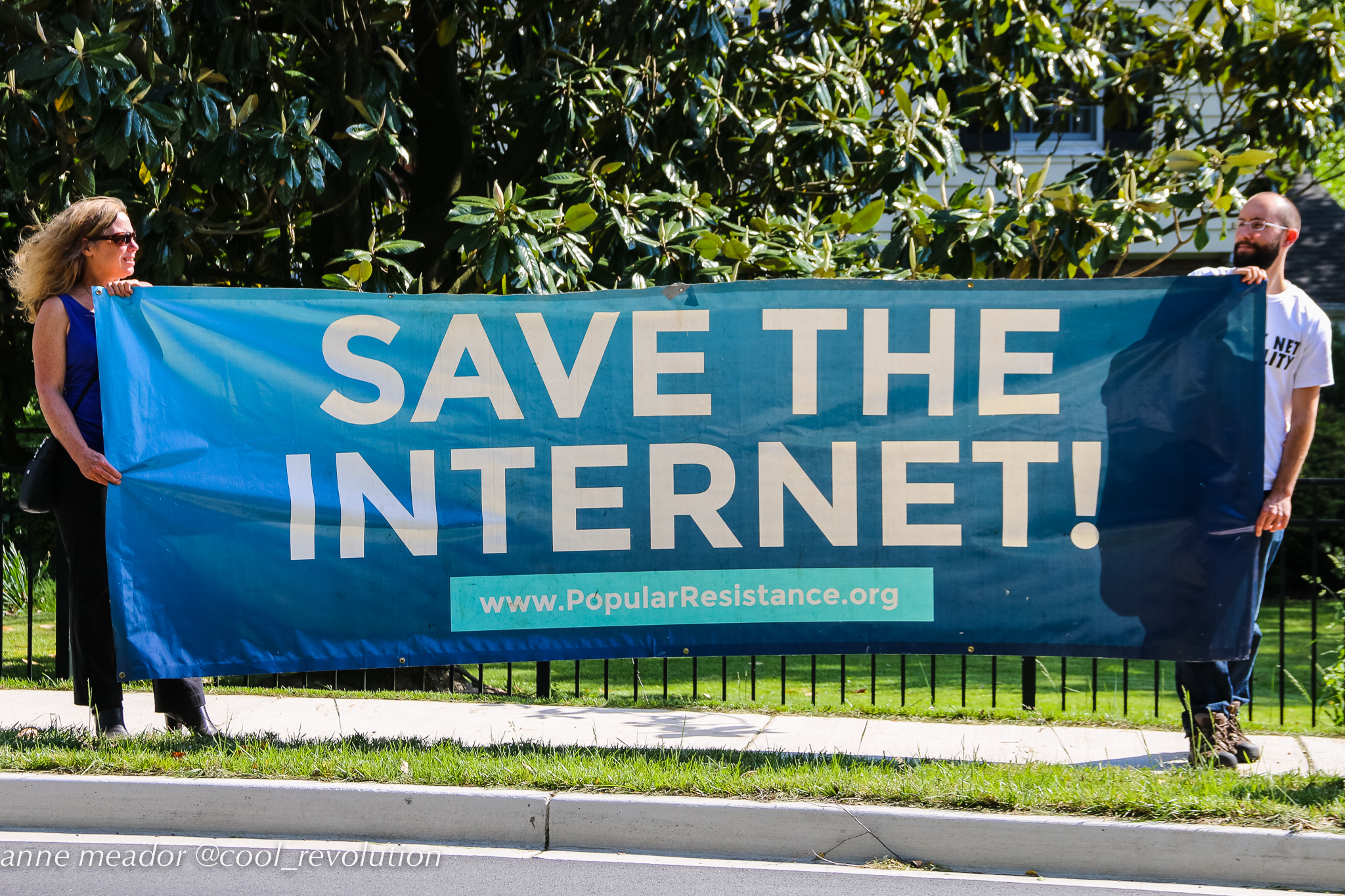It wasn’t easy to catch up with Barbara Baker-larush as she walked briskly along the C&O Canal through Georgetown. Even on this magnificent autumn day, she wouldn’t be diverted from her important mission. Walkers, joggers, and bikes cleared a path for her. Cars halted at street crossings.
She couldn’t stop for me either, she said, only slow down a little. A copper pail covered with a red cloth swung lightly at her side in rhythm with the long grey pony tail down her back. She attended the pail with special care, I noticed, like a courier with an urgent delivery. She pulled back the red cloth to reveal the contents: clear, clean water taken from the source of the Potomac River.
Baker-larush is an Ojibwe woman from the Chippewa Indian Reservation near Hayward, Wisconsin. On Saturday, she walked one leg of the Potomac River Nibi Walk, which started on October 7 in Fairfax Stone, W.Va. and will conclude at Point Lookout, Md. on October 19.
 Carrying a golden eagle feather for protection, the copper vessel with Potomac River water and a GPS tracker, Baker-larush is one of several Nibi Water Walkers. They say they are journeying along this river and others to draw attention to the pollution in the water, to “heal” it and change people’s current damaging relationship to waterways. The walks are “extended ceremonies to pray for the water,” according to the Nibi Walks website. “Every step is taken in prayer and gratitude for water, our life giving force,” it says.
Carrying a golden eagle feather for protection, the copper vessel with Potomac River water and a GPS tracker, Baker-larush is one of several Nibi Water Walkers. They say they are journeying along this river and others to draw attention to the pollution in the water, to “heal” it and change people’s current damaging relationship to waterways. The walks are “extended ceremonies to pray for the water,” according to the Nibi Walks website. “Every step is taken in prayer and gratitude for water, our life giving force,” it says.
Baker-larush’s tribal name is Spirit Bird Woman. She has participated in several Nibi Walks before, including the Missouri and Mississippi Rivers. An experienced walker, on Saturday she had hiked several miles at a brisk clip southeast on the C&O Canal towpath, which runs parallel to the Potomac River, toward Washington, DC.
“Seventy-five percent of the earth is water, but only two percent is drinkable,” she said. “I do these walks to make sure that my children’s children, and seven generations down the line, have fresh water to drink. Because without water, there is no life.”
In crowded Georgetown, Sharon Day, executive director of the Indigenous People’s Task Force, waited for Baker-Larush in a well-traveled RV. She has helped organize many of the waterwalks. “Our waterways are severely impaired,” she said. “Water is life, and there can be no life without water.”
The water is usually fairly clean at the “headwaters” and gets more polluted as it goes downstream from human activity, she said. They carry some of the source water to the “confluence”—the Chesapeake Bay, in the case of the Potomac River.

“We want to give river a taste of how she began, and that’s how we wish for her to be again,” she said. “All the while that we’re carrying the water, we’re telling it, ‘We love you, we thank you, we respect you.’”
In her tribe, she said, water is women’s responsibility, while fire is men’s.
Day believes that water is playing a special role for Native Americans right now. Over 300 tribes have united to oppose the Dakota Access Pipeline and protect the Missouri River, in particular, the water supply for the Standing Rock Sioux tribe at Cannonball, North Dakota. Day lent her support to the water protectors at Standing Rock at the end of August, bringing tents, blankets, and money, and performed a water ceremony at the launching of boats into the Missouri River.
She thinks that people need to change practices like putting chemicals on their lawns, and it is also important to stop extractive industries which pollute water. “One of the things that seems to be missing is this relationship with water, not just as a commodity, but as a living entity that has a spirit,” she said.
The Potomac River, Stressed and Suffering
The Potomac River is the source of drinking water for millions of people, especially in the metropolitan Washington, DC area. The water quality is threatened by major polluters, stormwater runoff, extractive industries such as hydraulic fracking and mining, and sewage.
An Environmental Working Group study released in September found that levels of hexavalent chromium in drinking water supplying the metropolitan Washington, DC region far exceeded a public health goal. The DC Water and Sewer Authority, the Washington Suburban Sanitary Commission and the Fairfax County Water Authority all obtain water from the Potomac River. Hexavalent chromium, a likely carcinogen made famous by the movie “Erin Brokovich,” often enters underground and surface waters from leaching hazardous waste sites.

Industrial neglect and malfeasance are sometimes responsible for toxic releases into the river. Last December, it was revealed that for decades, toxic chemicals from a coal ash pond have been leaking into Quantico Creek from Dominion Virginia Power’s Possum Point power station. Quantico Creek runs into the Potomac River.
Dominion Virginia Power also admitted that it was responsible for a 13,500-gallon spill of mineral oil into a waterfowl sanctuary near Reagan National Airport last February.
Huge swaths of submerged aquatic vegetation and algae have appeared in several spots in the Potomac around Washington, DC. Massive amounts of stormwater runoff mixed with raw sewage from Old Town Alexandria during heavy rains may account for the thick growth at Oronoco Bay.






